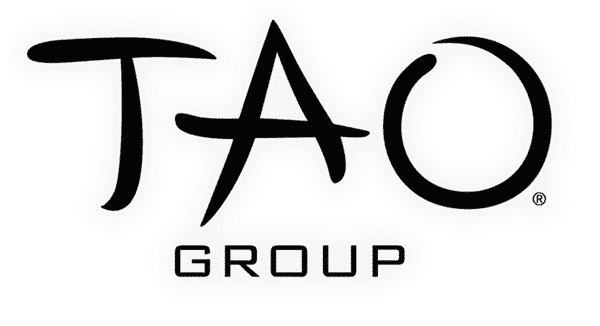Are your LinkedIn ads not generating the expected results? Are you struggling to identify and measure the success of your LinkedIn advertising campaigns? Worry no more! This blog post will provide you with indispensable insights on measuring the impact of your LinkedIn advertising: key metrics to consider, helping you optimize your ads for maximum impact and ROI.
We’ll explore the importance of LinkedIn advertising metrics, essential metrics for evaluating ad performance, dive deeper into advanced metrics, and provide tips for optimizing your LinkedIn advertising performance. Get ready to transform your LinkedIn advertising strategy and achieve unprecedented success!
Key Takeaways
Understanding and leveraging LinkedIn Advertising metrics is essential to improve campaign performance.
Monitor Impressions, Reach, Clicks & CTR for insights into ad effectiveness and audience engagement.
Utilize A/B testing, targeting refinements & budget strategies to optimize campaigns & maximize ROI.
Understanding the Importance of LinkedIn Advertising Metrics

Linked.In advertising metrics play a pivotal role in discerning successful campaigns, refining targeting, gaining audience insights, cutting costs, and enhancing ROI, leading to improved campaign performance. These metrics include:
Conversions
Impressions and reach
Clicks and click-through rate (CTR)
Conversions and conversion rate
Cost per click (CPC) and cost per conversion
Engagement metrics
Video ad metrics
These metrics offer a comprehensive overview of your LinkedIn ad performance.
Aligning these metrics with your business goals ensures that your LinkedIn ad campaigns are focused on driving desired outcomes, such as leads or sales. Utilizing these metrics empowers you to make data-guided decisions for optimizing your ad campaigns, contributing to the effectiveness of your LinkedIn ads and their ability to generate significant results.
The role of metrics in LinkedIn advertising success

Metrics are integral to attaining success in LinkedIn advertising, offering insightful data into ad performance and potential areas for enhancement, resulting in improved LinkedIn ad campaign performance. For example, comparing cost per lead with customer lifetime value can help you assess the efficiency of your resources spent on LinkedIn ads and evaluate the campaign ROI.
Monitoring and scrutinizing these metrics enables you to pinpoint the most successful campaigns, tweak your targeting, and fine-tune your ongoing and future campaigns to guarantee they achieve the desired results. This will lead to a more efficient use of your advertising budget and a higher return on investment.
Aligning metrics with business goals
Setting goals before initiating a LinkedIn ad campaign helps you identify which metrics to monitor and evaluate, ensuring your marketing efforts are focused on driving desired outcomes. LinkedIn’s objective-based framework in Campaign Manager allows you to evaluate the influence of various ads on business metrics, such as:
Revenue
Lead generation
Brand awareness
Website traffic
By setting clear goals and tracking the right metrics, you can optimize your LinkedIn ad campaign for success, ultimately leading to a successful LinkedIn ad campaign.
Revenue is the most significant metric that CEOs consider when evaluating the effectiveness of LinkedIn advertising in reaching the desired user base. The construction of dashboards using revenue data allows you to depict performance against key performance indicators like return on advertising spend (ROAS), customer acquisition cost (CAC), and ROI.
Essential Metrics for Evaluating LinkedIn Ad Performance

Essential metrics for evaluating LinkedIn ad performance include:
Impressions
Reach
Clicks
CTR (Click-Through Rate)
Conversions
Conversion rate
Evaluating various ad campaigns’ performance on the LinkedIn dashboard assists you in identifying the most successful ads and optimizing ongoing and future campaigns.
Monitoring these metrics can help refine and optimize marketing campaigns to ensure they are achieving the desired outcomes, such as driving leads and conversions or building brand awareness through a well-executed brand awareness campaign.
These essential metrics provide invaluable insights into the performance of your LinkedIn ads, allowing you to make informed decisions and adjustments to your ad campaigns. Concentrating on these metrics guarantees the effectiveness of your LinkedIn advertising efforts and their ability to yield significant results.
Impressions and Reach
Impressions and reach are key metrics for gauging the visibility and potential reach of LinkedIn ads among the targeted audience. Targeting the right audience is crucial to maximizing the reach of a LinkedIn ad campaign. Crafting compelling ad content and utilizing effective ad placement strategies are also essential to get the desired results.
Ad impressions are directly linked to user engagement with your ads. A rise in your ad budget can potentially amplify ad impressions, thus enhancing the probability of users interacting with your ads and engaging with your content. This, in turn, can lead to higher brand awareness and more leads for your business.
Clicks and Click-Through Rate (CTR)
The click-through rate (CTR) for LinkedIn advertising is a measure of success. It is calculated by taking the number of clicks an ad receives and dividing it by the number of times the ad is shown. Clicks and CTR offer insights into ad effectiveness, audience engagement, and the relevance of ad content. Monitoring CTR metrics is essential for improving campaign performance. It aids in ensuring that outcomes such as driving traffic to your website are fulfilled.
A low CTR may suggest that the targeted audience is not appropriate or that the ads are not persuasive enough to prompt a click. On the other hand, a high CTR typically indicates that your ad campaign is successful in driving traffic to your website, generating leads, and achieving desired outcomes.
Conversions and Conversion Rate
Conversions and conversion rates provide an indication of the effectiveness of LinkedIn ads in achieving desired outcomes, such as leads or sales. These metrics can be used to evaluate the effectiveness of LinkedIn ads in achieving desired outcomes and optimizing your advertising efforts.
LinkedIn Conversation. Ads, for instance, have an average click-through rate of approximately 10%, indicating that these ads are effective in driving engagement and conversions. By monitoring conversions and conversion rate, you can ensure that your LinkedIn advertising efforts are successful in achieving your desired outcomes and generating meaningful results.
Diving Deeper: Advanced Metrics for LinkedIn Advertising Analysis

Advanced metrics for assessing the efficacy of LinkedIn advertising campaigns include:
CPC (Cost Per Click)
Cost per conversion
Engagement metrics
Video ad metrics
These metrics provide a deeper understanding of your LinkedIn ad performance, enabling you to identify areas of improvement and allocate resources effectively.
Utilizing these advanced metrics enables you to:
Make data-informed decisions to refine your LinkedIn advertising efforts
Boost your return on investment
Achieve more efficient use of your advertising budget
Improve campaign performance.
Cost Per Click (CPC) and Cost Per Conversion
CPC and cost per conversion provide an assessment of the effectiveness and return on investment of LinkedIn ad campaigns. The cost per click formula is derived by dividing the total cost by the total number of clicks. These metrics can help you evaluate the efficiency of your ad spend and identify areas of improvement in your ad campaigns.
By monitoring CPC and cost per conversion, you can optimize your campaigns to minimize costs and maximize ROI. This will lead to a more efficient use of your advertising budget and a higher return on investment for your LinkedIn advertising efforts.
Engagement Metrics

Engagement metrics, such as likes, comments, and shares, offer valuable insight into audience interests and preferences. These metrics help to evaluate the level of audience engagement and the success of your advertising efforts on LinkedIn.
By tracking engagement metrics, you can gain a more comprehensive understanding of your ads’ performance, allowing you to make necessary modifications to optimize your campaigns. This will lead to a more efficient use of your advertising budget and a higher return on investment.
Video Ad Metrics
Video ads metrics enable evaluation of video ads on LinkedIn, such as view counts and completion rates. The average engagement rate for LinkedIn Video Ads is just over 1.5%, and the benchmark engagement rate for LinkedIn Live and Virtual Events is approximately 10%.
By monitoring video ads metrics, you can:
Identify the most effective video content and formats for driving engagement and conversions
Make more efficient use of your advertising budget
Achieve a higher return on investment for your LinkedIn advertising efforts.
Leveraging LinkedIn Campaign Manager for Data-Driven Decisions
Utilizing LinkedIn Campaign Manager for data-driven decisions entails navigating and comprehending the platform, establishing conversion tracking, and employing the Insight Tag. Campaign Manager is the advertising platform offered by LinkedIn, providing valuable insights into ad performance across the platform and beyond.
Leveraging LinkedIn Campaign Manager enables you to:
Make informed decisions and adjustments to your ad campaigns
Ensure that your LinkedIn ads are effective and generate meaningful results
Achieve a more efficient use of your advertising budget
Obtain a higher return on investment.
Navigating and Understanding Campaign Manager
Familiarizing oneself with Campaign Manager assists marketers in:
Accessing and assessing LinkedIn ad performance data
Establishing baselines
Setting objectives
Optimizing campaigns
The left-side navigation in Campaign Manager affords convenient access to the necessary campaign and account elements for effective campaign management.
Navigating and understanding Campaign Manager allows you to access and interpret ad performance data, establish goals, and enhance your campaigns to attain the desired outcomes. This will lead to a more efficient use of your advertising budget and a higher return on investment.
Setting Up Conversion Tracking and Insight Tag
Setting up conversion tracking and Insight Tag offers comprehensive insights into ad performance, including tracking conversions outside the platform. The Insight Tag on LinkedIn enables marketers to track the number of:
Downloads
Sign-ups
Purchases
Other conversions
Generated by their campaigns, even after the LinkedIn user leaves LinkedIn to visit their website.
Setting up conversion tracking and Insight Tag provides you with the following benefits:
Detailed insights into your ad performance
Empowerment to fine-tune your campaigns correspondingly
More efficient use of your advertising budget
Higher return on investment for your LinkedIn advertising efforts.
Tips for Optimizing LinkedIn Advertising Performance

Strategies for optimizing LinkedIn advertising performance include refining ad targeting, conducting A/B tests on ads, and adjusting bidding and budget strategies. Implementing these strategies allows you to refine your LinkedIn ad campaigns, ensuring their effectiveness and ability to yield significant results.
In the following sections, we will delve into each of these strategies and provide insights on how to effectively apply them to your LinkedIn advertising efforts, ultimately achieving higher return on investment and improved campaign performance.
Refining Ad Targeting
Refined ad targeting entails analyzing professional demographic data on LinkedIn, sorting by relevant metrics, and utilizing Audience Expansion for analogous audiences. Targeting options on LinkedIn include job title, job seniority, and company size.
Refine your ad targeting ensures your ads reach the pertinent decision-makers, optimizing your expenditure on LinkedIn. Leveraging targeted advertising will lead to a more efficient use of your advertising budget and a higher return on investment.
A/B Testing Ad Creatives
A/B testing is a method of comparing two versions of an advertisement to assess which one yields better results. Implementing strong calls-to-action can be an effective strategy to drive conversions and improve ad performance.
Conducting A/B tests on your ad creatives helps in identifying the most effective ad copy, images, and formats to propel engagement and conversions. This will lead to a more efficient use of your advertising budget and a higher return on investment for your LinkedIn advertising efforts.
Adjusting Bidding and Budget Strategies
Integrating data from multiple sources and leveraging visualization tools can facilitate the discovery of new correlations and enhance performance. By leveraging LinkedIn campaign insights, marketers can:
Identify areas of improvement
Allocate resources accordingly
Optimize their campaigns
Maximize their return on investment
Modifying your bidding and budget strategies can enhance the efficiency of your LinkedIn advertising endeavors, resulting in a more prudent use of your advertising budget and a superior return on investment.
Summary

In conclusion, understanding and leveraging the right metrics are crucial for the success of your LinkedIn advertising campaigns. By focusing on essential metrics, diving deeper into advanced metrics, and leveraging LinkedIn Campaign Manager, you can make data-driven decisions to optimize your ad campaigns and maximize ROI.
Remember to refine your ad targeting, conduct A/B tests on ad creatives, and adjust your bidding and budget strategies to ensure the most efficient use of your advertising budget. By implementing these strategies, you will achieve unprecedented success in your LinkedIn advertising efforts.
Frequently Asked Questions
What are the key metrics for LinkedIn ads?
Understanding key metrics for LinkedIn ads such as Impressions, Click-through Rate, Cost Per Click, Conversions, Lead Generation Form Fill Completion Rate, Cost Per Lead, Cost Per Conversion and Engagement Rate is essential to track marketing goals.
What metrics should I measure on LinkedIn?
Measure your Linked.In engagement, impressions, followers growth, clicks and CTR, video views, traffic metrics, demographics, and visitors to get a comprehensive overview of your performance.
What feature measures the business impact of your LinkedIn ads?
With the LinkedIn Insight tag, you can track post-click and post-view conversions, giving you insights into the return on investment of your ad campaigns.
Conversion tracking lets you measure how your ads are driving business results, like generating leads, purchases, and event registrations.
How can I optimize my LinkedIn ad targeting?
Maximize the effectiveness of your LinkedIn ad targeting by analyzing demographic data, sorting according to relevant metrics, and leveraging Audience Expansion to reach analogous audiences.
What is A/B testing in LinkedIn advertising?
A/B testing in LinkedIn advertising is a method of comparing two versions of an advertisement to assess which one performs better.




































